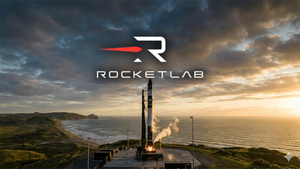
American households are bracing for a significant financial hit as a wave of tariff-induced inflation sweeps across critical consumer goods and services. From the family car to essential baby products, and even the cost of staying healthy, prices are already on an upward trajectory or are poised for substantial hikes. This widespread impact, largely attributed to a resurgence of protectionist trade policies, is reshaping consumer spending habits and raising alarms among economists and industry leaders about its potential to stifle economic growth and exacerbate the cost of living crisis. The average U.S. household could face an additional cost of $2,400 to $2,700 per year by 2025 due to these tariffs, with low-income families disproportionately affected as they allocate a larger share of their income to necessities.
The Rising Cost of Living: How Tariffs Are Inflating Everyday Essentials
The current landscape of tariff-driven price increases is a direct consequence of escalating trade tensions and new import duties, pushing the average applied U.S. tariff rate to levels not seen since the 1930s. This surge in import costs is not merely impacting luxury items; it's infiltrating the foundational elements of household budgets, from transportation to healthcare and daily sustenance.
The automotive sector is experiencing significant tremors. Tariffs of 25% on all cars built outside the United States and many imported parts took effect on April 3 and May 3, 2025, respectively. These duties are projected to increase new car prices by as much as $6,000 for vehicles under $40,000, with some imported models potentially seeing increases up to $20,000. Even domestically produced cars are not immune, as they heavily rely on imported components like steel, aluminum, and electronics. For example, General Motors (NYSE: GM) incurred $1.1 billion in second-quarter tariffs alone in 2025, with a projected $5 billion for the year due to its extensive supply chain ties to Canada, Mexico, and South Korea. Luxury automaker BMW initially absorbed these costs but began passing them on to consumers by May 1, 2025, leading to higher car prices, increased car taxes, financing costs, and insurance premiums. The ripple effect extends to the used car market, where demand and prices are expected to rise as new vehicles become less affordable, and even car repairs and insurance rates are set to climb due to tariffs on imported replacement parts.
The healthcare sector, particularly health insurance premiums, is showing significant vulnerability. U.S. health insurance premiums are forecast to see their largest increase in 15 years in 2026. The Kaiser Family Foundation (KFF) projects a median premium increase of 18% for Affordable Care Act (ACA) subscribers next year, more than double the average annual growth rate from 2023 to 2025. Major players like UnitedHealth (NYSE: UNH) have cited "the uncertainty of tariffs under the Trump administration and the expenses of reshoring pharmaceutical manufacturing in the U.S." as reasons for proposed premium increases. A 25% tariff on pharmaceutical imports alone could elevate national drug costs by nearly $51 billion annually. Insurers are proactively incorporating these potential cost increases into their proposed rates, leading to higher premiums, reduced plan options, or increased cost-sharing for employers, even before specific policy guidance is clear. A survey revealed that 82% of healthcare industry professionals anticipate a 15% increase in hospital and health system costs within six months due to import tariffs.
Parents are particularly hard hit as the children's products industry, highly reliant on Chinese manufacturing, faces steep tariff-induced price hikes. Infant furniture currently faces average tariffs of about 129%, toys 113%, and infant clothing 41%. Since April 2025, prices for essential baby products like strollers, car seats, cribs, high chairs, and baby monitors have increased by over 20%. Toy prices have climbed by 3.7% in just four months. Parents could be facing an additional $1,000 annually in tariff-related costs for baby essentials. Manufacturers and retailers are already halting shipments, with warnings of potential shortages of necessities as early as the current month. Companies like UPPAbaby have already implemented significant price increases, with a car seat costing $150 more and a Vista stroller increasing by $300. These rising costs, coupled with existing inflation in groceries and childcare, could force many parents to rely on secondhand or outdated products, potentially compromising safety standards. Lawmakers and industry groups are advocating for exemptions for these critical baby products.
Finally, tariffs are pushing up prices across a wide array of food items. As of August 7, 2025, various tariffs ranging from 10% to 50% are in effect against imports from dozens of countries, impacting not only edible products but also essential goods involved in food production, such as fertilizers, machinery, and packaging materials. Consumers can expect price increases on nuts, seafood, coffee, tropical fruits, and olive oil, with Mexican tomatoes facing a 17% tariff. European wines and spirits could see a price surge of up to 30% by September. The challenge for food imports is that onshoring production is often difficult or impossible due to climate or land constraints, meaning these increased costs are more likely to be passed directly to consumers. Approximately 74% of U.S. food imports, totaling $163 billion in 2024, were subject to these tariffs, with price increases expected to be most immediately felt on perishable groceries. The prevailing consumer sentiment is near a historic low, compounded by stubbornly high interest rates and increasing repair and insurance costs, indicating a significant financial strain on households.
The Shifting Sands: Identifying Winners and Losers in a Tariff-Laden Market
The current wave of tariff-induced inflation is creating a distinct divergence in fortunes for public companies, largely dependent on their supply chain structures, pricing power, and market exposure.
In the automotive sector, major automakers with extensive global supply chains are facing significant headwinds. Toyota Motor (NYSE: TM) reported a $3.06 billion hit in tariff duties and projects a $9.5 billion impact by the end of its fiscal year, expecting a 44% decline in net profit. General Motors (NYSE: GM) saw a $1 billion drop in Q2 profits and estimates a $4-5 billion annual impact, leading to a 35% decline in net income. Volkswagen AG, Ford Motor Co. (NYSE: F), and Stellantis (NYSE: STLA) have also reported hundreds of millions to billions in tariff-related losses. These companies often absorb costs in the short term, but are ultimately forced to pass them on, potentially cutting production of entry-level models. Conversely, companies with predominantly domestic manufacturing, such as Tesla Inc. (NASDAQ: TSLA) and Rivian Automotive Inc. (NASDAQ: RIVN), are relatively insulated from import tariffs, positioning them as potential beneficiaries. Luxury brands like Ferrari N.V. (NYSE: RACE), with its high-net-worth client base, can more easily implement price increases without significantly impacting demand. Domestic car dealerships and auto repair and maintenance shops may also see increased business as new car prices deter purchases, driving consumers to extend the life of their current vehicles.
Within the healthcare industry, health insurance providers are largely on the losing end. UnitedHealth Group (NYSE: UNH), Optimum Choice of Maryland, and Independent Health Benefits Corporation of New York are facing increased costs for claims due to tariffs on imported medical devices, supplies, and pharmaceutical ingredients. These rising costs are invariably passed on to consumers through higher premiums, co-pays, and deductibles, as exemplified by UnitedHealthcare of New York citing tariff uncertainty for a 3.6% premium increase. Small businesses providing employer-sponsored plans are also struggling with higher premiums. There are no clear "winners" in the direct health insurance market from tariffs, as the entire industry faces increased input costs. However, pharmaceutical and medical device manufacturers with strong domestic production capabilities, like Regeneron Pharmaceuticals Inc. (NASDAQ: REGN) or Gilead Sciences Inc. (NASDAQ: GILD), could potentially gain if tariffs incentivize a shift away from foreign sourcing, though this would require significant investment and time.
The children's products industry is highly exposed to the negative impacts of tariffs. Companies like MGA Entertainment (a large private toy company), Delta Children, and Newell Brands (NASDAQ: NWL), parent company of Baby Jogger and Graco, are struggling significantly. With nearly 80% of U.S. toys and a large portion of baby gear manufactured in China, these companies face enormous tariff burdens, leading to price increases of over 20% for essential baby products. Delta Children has even paused shipments from China, anticipating bare shelves. Mattel Inc. (NASDAQ: MAT), despite actively diversifying its supply chain away from China, still faces increased costs and has indicated it will raise prices. Small toy companies, which represent 96% of American toy businesses, are particularly vulnerable, with almost half potentially facing closure. There are no clear "winners" within this sector, as the pervasive reliance on imports means the industry as a whole is bracing for significant challenges.
In the food sector, importers, distributors, and retailers are largely losers. Hormel Foods Corp. (NYSE: HRL) and other food producers reliant on imports face rising costs. Agribusiness giants like Archer Daniels Midland (NYSE: ADM), Bunge Limited (NYSE: BG), and Tyson Foods (NYSE: TSN) are also impacted by retaliatory tariffs on U.S. agricultural exports, which reduce demand and lower commodity prices. Restaurants and grocery stores are likely to boost prices to account for costlier imported ingredients and packaging. Conversely, domestic agricultural producers of goods that compete with tariffed imports (e.g., certain dairy products, fruits, and vegetables) could see increased domestic demand. Companies with strong local sourcing strategies and retailers with robust private label or store brand offerings may also benefit as consumers shift towards more budget-friendly options.
Broader Economic Currents: Industry Impact and Systemic Implications
Tariff-induced inflation in consumer goods is more than just a pricing issue; it's a systemic challenge with far-reaching implications that are reshaping global trade, industry structures, and regulatory landscapes. It exacerbates existing trends and introduces new complexities for businesses and policymakers alike.
This phenomenon directly contributes to a reconfiguration of global supply chains. The unpredictability and increased costs associated with tariffs are forcing companies to fundamentally re-evaluate their sourcing strategies. Many are pursuing "China-plus-one" approaches, diversifying production to other countries like India, Mexico, or Southeast Asia, or even considering reshoring to mitigate risks. This often involves significant investment, delays, and new inefficiencies. The trend also incentivizes increased automation and localization of production, as companies seek to reduce their reliance on volatile international supply networks. However, the economic benefits of reshoring are not immediate and require substantial capital. The frequent use of executive authority to impose tariffs, often citing national security, is also challenging established multilateral trade systems like the World Trade Organization (WTO), leading to a less predictable and potentially more fragmented global trade environment.
The ripple effects extend across industries. Businesses heavily reliant on imported raw materials or components, such as the automotive industry, face higher input costs that squeeze profit margins and disrupt efficient "just-in-time" ordering systems. This leads to logistical challenges, delays, and increased costs across the supply chain. Retaliatory measures from affected trading partners further restrict market access for exporters, as seen in the past with China, Canada, and Mexico imposing tariffs on U.S. agricultural goods. This creates a competitive disadvantage for industries and companies deeply embedded in global supply chains, while those with significant domestic production or already diversified sourcing may gain an edge. Small businesses, lacking the scale to easily reconfigure supply chains, are particularly vulnerable to these disruptions. Innovation can also be negatively impacted by increased costs and uncertainty.
From a regulatory and policy perspective, tariff-induced inflation presents significant dilemmas. It highlights a growing trend of nations adjusting trade policies to bolster domestic industries, often under national security pretexts, leading to greater reliance on executive authority. Such actions can often violate WTO principles, a challenge amplified by the current non-functioning WTO Appellate Body. Central banks face the difficult task of managing persistent inflation, potentially fueled by tariffs, while trying to avoid economic stagnation. Rising inflation expectations due to tariffs could influence monetary policy decisions, potentially slowing the pace of interest rate cuts. There have also been legal challenges to the administration's reliance on acts like the International Emergency Economic Powers Act (IEEPA) as the basis for these tariffs, which could alter their implementation path.
Historically, the Smoot-Hawley Tariff Act of 1930 serves as a stark warning, having significantly raised U.S. tariffs and contributed to the deepening of the Great Depression by stifling international trade and triggering widespread retaliatory tariffs. More recently, the Trump-era tariffs (2018-2019) were estimated to have reduced U.S. manufacturing employment by 1.4% by 2020 due to higher costs rather than protection. Economists warn that the current tariff environment carries similar risks, with a potential reduction of 0.2-0.5% in annual U.S. GDP growth if retaliatory measures escalate, and a long-run GDP reduction of about 6% according to the Penn Wharton Budget Model. These tariffs directly increase the cost of imported goods, filtering through the value chain to fuel inflation, with 61-80% of new tariffs passed through to consumer prices in some instances. This creates a real risk of job losses in import-dependent sectors and raises the specter of recession or stagflation.
The Road Ahead: What Comes Next for Tariff-Induced Inflation
The path forward for tariff-induced inflation in consumer goods is characterized by ongoing price pressures, strategic recalibrations by businesses, and evolving consumer behaviors across sectors. Both short-term adjustments and long-term structural shifts are anticipated.
In the short-term (2025-2026), tariffs are expected to continue driving up prices, with goods prices already showing increases above historical trends. Consumers will experience the direct pass-through of these costs, leading to supply chain disruptions as businesses grapple with increased import expenses, potentially halting shipments or reconsidering partnerships. This will likely cause consumers to cut back on spending, impacting overall economic growth and potentially leading to hiring freezes. The overall price level from 2025 tariffs could rise by 1.7% in the short run, equivalent to an average per-household income loss of $2,300 in 2025. For new cars, sticker prices are projected to rise by 4% to 8% by the end of 2025, adding thousands to the cost of a vehicle and impacting borrowing costs. Health insurance premiums are set to increase for 2026, driven by higher costs for prescription drugs and medical devices. Children's products will continue to see significant price hikes, potentially leading to shortages of essential items as manufacturers and retailers grapple with tariffs. Food items will experience higher grocery bills, with reduced variety on shelves and potential supply issues for imported goods.
Looking to the long-term (beyond 2026), the debate continues on whether tariff-induced inflation represents a one-time price level shift or sustained inflationary pressure. Many anticipate it pushing overall inflation above 2% well into 2026 and 2027. Tariffs are expected to create persistent headwinds for economic growth, potentially resulting in lower output, reduced labor productivity, and diminished wages, elevating the risk of a recession or stagflation. Businesses will continue to prioritize supply chain diversification and restructuring, exploring nearshoring or sourcing from countries not heavily targeted by tariffs. Consumers may permanently adjust spending habits, prioritizing value and seeking locally sourced or less-impacted products. For new cars, sustained tariffs will likely keep prices elevated, pushing more buyers into the used car market and driving up those prices by 20-25% over the next two years. In healthcare, tariff-related increases could fuel sustained inflation, leading employers to shift more costs to employees or reconsider offering employer-sponsored health insurance. The children's product sector might see long-term efforts to diversify manufacturing away from China, despite the challenges of stringent safety requirements. Food prices are expected to remain high due to global supply chain complexities, potentially shifting consumer preferences towards local sourcing.
Businesses are implementing crucial strategic pivots. This includes rigorous supply chain diversification away from heavily tariffed countries, detailed evaluation of cost structures, and careful adjustment of pricing strategies—often through surcharges, annual increases, or value bundling—while emphasizing transparency with customers. Seeking tariff exemptions and utilizing duty drawback programs will also be key. Investments in supply chain technology for enhanced resilience and visibility are growing, as are efforts to strengthen supplier relationships and explore product alterations or localized sourcing. Market challenges include increased input costs, reduced demand due to higher prices, and persistent market volatility, particularly for import-reliant industries. However, opportunities may emerge from the growth of domestic sourcing and nearshoring, boosting local manufacturing. Increased demand for supply chain technology and value-oriented products and services is also anticipated, as is a boost for aftermarket and repair services for durable goods as consumers hold onto products longer.
Wrapping It Up: Navigating a Tariff-Torn Market
The re-emergence of widespread tariffs has ushered in a new era of inflationary pressure across key consumer goods sectors, fundamentally reshaping the economic landscape. This is not a fleeting phenomenon but a structural shift embedding higher costs into the economy.
The key takeaways are clear: consumers face broad-based price increases across new cars, health insurance, children's products, and food items, eroding their purchasing power. Supply chains, particularly for import-reliant sectors, are proving rigid, making rapid shifts away from tariffed regions challenging and costly. This disproportionately impacts lower-income households and families with children.
Looking forward, the market is set for continued adjustments, with persistent inflationary pressures expected to contribute to an elevated price level for core goods. Consumer spending patterns will shift, prioritizing value and potentially reducing discretionary purchases. Businesses are actively pursuing supply chain diversification, but these are long-term, capital-intensive strategies. The confluence of higher input costs, reduced demand, and supply chain disruptions creates significant economic headwinds, raising the specter of a slowdown or even stagflation.
The lasting impact of tariff-induced inflation is a fundamental erosion of consumer purchasing power and a global trade environment that is less efficient and more fragmented. The unpredictability of trade policies injects substantial uncertainty for businesses, complicating long-term planning, investment, and innovation. While the stated goal of tariffs is to protect domestic industries, the immediate outcome is a higher cost of living for consumers and increased operational complexities for businesses, with the long-term benefits of reshoring remaining uncertain and expensive to achieve.
Investors should remain vigilant in the coming months. Closely monitor Federal Reserve monetary policy, as persistent tariff-induced inflation could influence interest rate decisions. Scrutinize corporate earnings reports and profit margins, particularly for major retailers and manufacturers, to assess their ability to pass on costs. Consumer spending data and confidence surveys will be crucial indicators of household financial strain. Identify companies successfully diversifying supply chains or localizing production, as these may demonstrate greater resilience. Finally, stay informed on trade policy developments, including any new tariff announcements, retaliatory measures, or legal challenges, as these will continue to shape the economic outlook.




